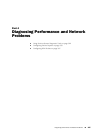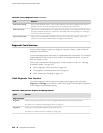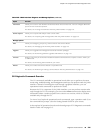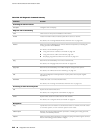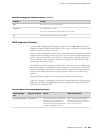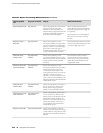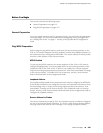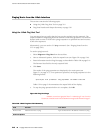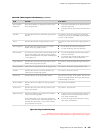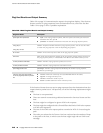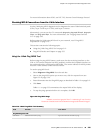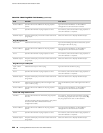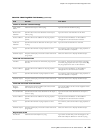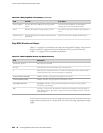
Before You Begin
This section includes the following topics:
■ General Preparation on page 215
■ Ping MPLS Preparation on page 215
General Preparation
To use the J-Web interface and CLI operational tools, you must have the appropriate
access privileges. For more information about configuring access privilege levels,
see “Adding New Users” on page 11 and the JUNOS System Basics Configuration
Guide.
Ping MPLS Preparation
Before using the ping MPLS feature, make sure that the receiving interface on the
VPN or LSP remote endpoint has MPLS enabled, and that the loopback interface on
the outbound node is configured as 127.0.0.1. The source address for MPLS probes
must be a valid address on the Services Router.
MPLS Enabled
To process ping MPLS requests, the remote endpoint of the VPN or LSP must be
configured appropriately. You must enable MPLS on the receiving interface of the
outbound node for the VPN or LSP. If MPLS is not enabled, the remote endpoint
drops the incoming request packets and returns an “ICMP host unreachable” message
to the Services Router. To enable MPLS on an interface, see the J-series Services
Router Advanced WAN Access Configuration Guide.
Loopback Address
The loopback address (lo0) on the outbound node must be configured as 127.0.0.1.
If this interface address is not configured correctly, the outbound node does not have
this forwarding entry. It drops the incoming request packets and returns a “host
unreachable” message to the Services Router. If the outbound node is a Services
Router, see the J-series Services Router Advanced WAN Access Configuration Guide to
configure the loopback address.
Source Address for Probes
The source IP address you specify for a set of probes must be an address configured
on one of the Services Router interfaces. If it is not a valid Services Router address,
the ping request fails with the error message “Can't assign requested address.”
Before You Begin ■ 215
Chapter 12: Using Services Router Diagnostic Tools



